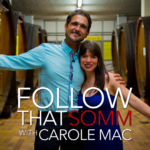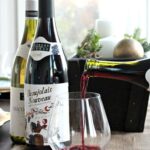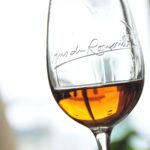
Champagne
Champagne is where sparkling wine reigns supreme. Located just over an hour east of Paris, it is a cool climate wine region that produces crisp, acidic bubbly wines from chalky soils. Champagne has its own special way of producing a carbonated wine, called the méthode traditionnelle. In this winemaking style, the wines go through a first fermentation in a tank, which creates a still wine. Then, the still wines are bottled with a bit of sugar and yeast (called a liqueur de tirage). Thanks to this addition, the wines undergo a second fermentation inside the bottle. They are then aged for a period of time in the bottle, generally from 15 months to two years, on the lees (dead yeast cells). During the aging process, the wines are riddled, or turned very slowly over time so that the lees are collected in the neck of the bottle. In the next step, called disgorging, the lees are eliminated from the bottle by freezing the bottle neck, which creates a pressure gradient and forces the lees to burst out without losing the wine. The remaining sparkling wine is then bottled again, sometimes with a dosage of sugar, which is what determines the sweetness level as indicated on the bottle (Brut Nature, Brut, Doux, etc.).
In general, wines that age on the lees have longer lasting, smaller bubbles, since the lees provide a structure to trap very tiny pockets of air. Coupling this lees aging process with the chalky terroir of Champagne leads to a well-structured wine with fine bubbles and flavors of brioche, apple, citrus, and almond.
Main Grape Varieties: Pinot Noir, Chardonnay, Pinot Meunier
Main Wine Style: Sparkling wines
Famous Appellations: Champagne

Loire
The Loire Valley is a narrow appellation that flanks the Loire River. It starts about three hours southwest of Paris and continues towards the Atlantic Ocean. It has four main sub-regions: the Upper, Middle, Central, and Lower Loire. The most well-known Loire Valley wines come from the Central and Middle regions. In the Central Loire, you’ll find the famous appellation Sancerre, and in the Middle Loire, you’ll find Anjou, Saumur, and Touraine.
Pinot Noir from the cool Loire Valley climate is very light, with fresh fruit notes, high acidity, and soft tannins. What sets Loire Valley Pinot Noir apart from Burgundy is the absence of oak flavors. Some of the best Pinot Noir in this region comes from Sancerre, with flavors of tart cherries and strawberry. But Sancerre is most well-known for producing some of the world’s best Sauvignon Blanc. Its rolling limestone hills make a wine that is bright, acidic, and slightly smoky. In Anjou, you’ll find more powerful red wines made from Cabernet Franc.
Main Grape Varieties: Pinot Noir, Sauvignon Blanc, Cabernet Franc, Chenin Blanc
Main Wine Style: Light-bodied, cool-climate wines
Famous Appellations: Sancerre, Anjou, Saumur, Touraine
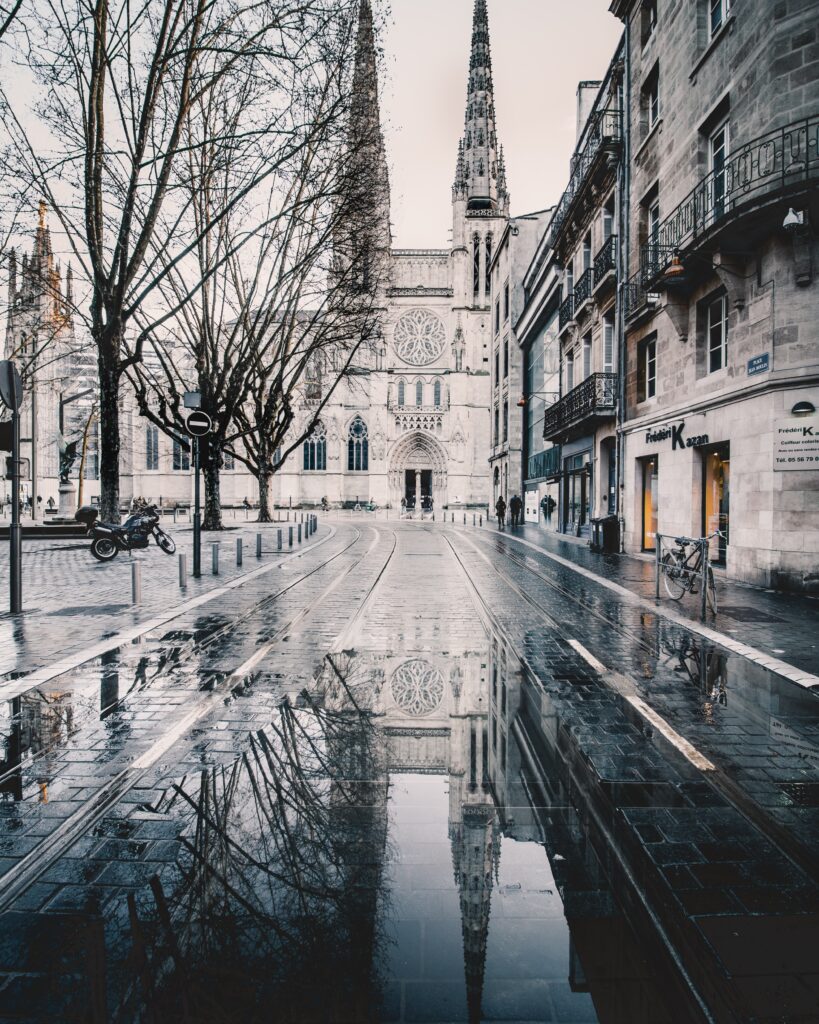
Bordeaux
If Bordeaux wine had a personality, it would be powerful, rich, and stately. Bordeaux is known for its deep, bold red wines with strong tannins. The “Bordeaux Blend” is primarily made with Merlot and Cabernet Sauvignon, but can also include Cabernet Franc, Petit Verdot, Malbec, and Carménère.
The Bordeaux region is split by the Garonne River. On the Right Bank’s clay soils, the dominant grape variety planted is Merlot, which produces deep, plummy wines. Some famous appellations on this side of the river include St. Émilion and Pomerol. Saint Émilion wines are known for their structure, acidity, and notes of baking spice and red fruits. Pomerol tends to have deeper black fruit notes with very little spice or oak.
On the Left Bank’s gravel soils, Cabernet Sauvignon is the main grape variety. These wines are very tannic, with flavors of cooling menthol, black currant, and tobacco. Some famous appellations on the Left Bank include Médoc and Graves. In Médoc, the blends include more Cabernet Sauvignon and Petit Verdot, which leads to full-bodied wines with powerful tannins. In Graves, the blends have a higher percentage of Merlot and Cabernet Franc, which translates to slightly more fruity and aromatic wines.
Main Grape Varieties: Merlot and Cabernet Sauvignon
Main Wine Style: Deep, tannic red wines
Famous Appellations: St. Émilion, Pomerol, Médoc, Graves

Languedoc Roussillon
Languedoc Roussillon (“Long-eh-dock Roo-see-on”) is the land of sunshine, located in the south of France along the Mediterranean Sea. It is a wine-producing powerhouse. In 2019, Languedoc Roussillon produced 36% of France’s wines and over 10% of the world’s wines. Languedoc Roussillon has the largest portion of France’s organic producers thanks to its dry climate that protects against moisture-driven vineyard diseases and reduces the need for fungicides.
Red, white, rosé, and even some sparkling wine are made here. Some of the best appellations in this region include Corbières, Faugères, and Minervois, all of which are known for their red wine production. The warm, sunny climate induces deep ripening of the red grapes, which can lead to higher alcohol, deeper fruit notes, and stronger tannins than red wines from cooler regions. Red wines from Minervois, for example, have very intense berry fruit flavors thanks to these warm temperatures throughout the growing and ripening seasons.
White wines from Languedoc Roussillon tend to be made with Picpoul and Grenache Blanc grape varieties, leading to a zesty white wine that is great with oysters. If you’re looking for a good deal, you’ll find it in this region.
Main Grape Varieties: Grenache, Syrah, Carignan, Mourvèdre, and Cinsault
Main Wine Style: Full-bodied, fruity red wines
Famous Appellations: Corbières, Faugères, and Minervois
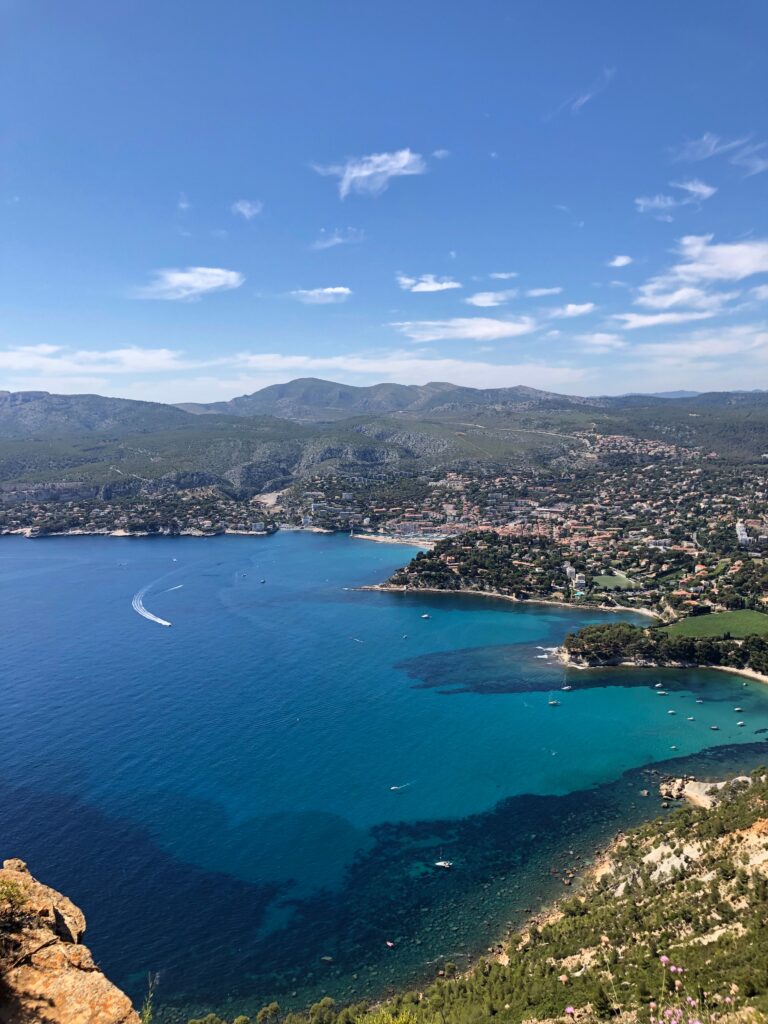
Provence
Located by the Mediterranean Sea near Marseille, with its rugged, rocky mountains and waving fields of lavender, Provence is one of the most beautiful and unique parts of France. It is also the land of rosé, which accounts for nearly 90% of Provence’s wine production. In fact, they take their rosé so seriously that they have the world’s only research center, Le Centre du Rosé, dedicated to rosé winemaking.
Rosé wines in Provence are made by letting the grape juice soak with the grape skins for a short period of time. The result is a light, crisp wine with just a touch of red color and notes of stone fruits, rose, and rhubarb.
Main winemaking style: rosé
Main grape varieties: Grenache, Mourvèdre, Cinsault, Syrah
Famous Appellations: Bandol, Côtes de Provence, Cassis
Rhône Valley
The Rhône Valley is located just above Provence, stretching from Avignon to just south of Lyon. The region flanks the Rhône River and is known for its very steep, terraced vineyard hills. Rhône Valley wines tend to be GSM blends (Grenache, Syrah, and Mourvèdre). The region is split into two main areas: the Southern Rhône and the Northern Rhône. The blends are dominated by Grenache in the south, which leads to fruitier wines with flavors of strawberry, raspberry, and savory herbs. In the north, the blends are dominated by Syrah, which has blackberry, licorice, and black pepper flavors. In some Northern Rhône appellations like Côte-Rôtie, Syrah wines can be blended with just a touch of Viognier, a perfumy white grape that brings a floral essence to these red wines.
Main Grape Varieties: Grenache, Syrah, Mourvèdre
Main Wine Style: floral and fruity red wines
Famous Appellations: Châteauneuf-du-Pape, Côte-Rôtie, Hermitage
Beaujolais
Beaujolais is located just south of Burgundy. This region produces wines primarily from Gamay, a light-bodied, low-tannin red grape. Beaujolais is perhaps most well-known for its Beaujolais Nouveau, a young, easy-drinking, fruity wine that is released on the third Thursday in November each year. Not surprisingly, these wines tend to be drunk young, and are very affordable. A young Beaujolais will have flavors of pomegranate, violet, and even banana. The age worthy styles of Beaujolais come from one of ten Crus, such as Fleurie or Moulin-à-Vent. These wines have more structure, deeper fruit notes, and an earthy minerality. Compared to its neighbor, Burgundy, Beaujolais wines are much more budget-friendly.
Main Grape Varieties: Gamay
Main Wine Style: light, fruity red wines
Famous Appellations: Beaujolais, Beaujolais Villages, Fleurie, Moulin-à-Vent
Burgundy
Burgundy is a small wine region in mid-Eastern France that produces elegant, luxurious, and lean wines. Due to low supply and high demand, this region produces some of the most expensive wines on earth. Most wines made in Burgundy are single-varietal, with the reds made from Pinot Noir and the whites made from Chardonnay. The limestone soils in this region are said to be some of the best terroir around the globe for growing grapes, and they give Burgundy wines a flinty character. Many Burgundy wines, both red and white, undergo malolactic fermentation, which converts harsh malic acid into the softer, creamier lactic acid. Coupled with aging in French oak barrels, Burgundy wines have an elegant, soft mouthfeel. Pinot Noir from Burgundy has earthy flavors of black tea and mushroom coupled with red fruit notes of strawberry and raspberry. White Burgundy has aromas of apple and lemon, with pleasant flavors of cream, baking spice, and even a hint of saltiness.
Main Grape Varieties: Chardonnay and Pinot Noir
Main Wine Style: earthy, light red and white wine
Famous Appellations: Chablis, Côtes de Nuits, Côtes de Beaune
Alsace
Alsace is a long, narrow winemaking region that hugs the German border in Eastern France between the Rhine River and the Vosges Mountains. Wines from Alsace tend to have very high acidity since the grapes are usually harvested early, from late August to mid-September, when the acidity level in the berries is still quite high. Most Alsatian wines are white, made with floral, aromatic grapes like Riesling, Muscat, Gewürztraminer. These varieties have all been planted in the Rhine River Valley for centuries. But in contrast to German Riesling that can be quite sweet, Alsatian Riesling is almost always produced in a dry style. The only red grape allowed in Alsace is Pinot Noir, which is one of the lightest, fruitiest styles of this grape that can be found. Because it has so few tannins, it can even be served slightly chilled like a rosé. This region also makes some excellent-value sparkling wines known as Crémant d’Alsace, made in the same méthode traditionnelle as in Champagne, but they come with a lower price tag.
Main Grape Varieties: Riesling, Muscat, Gewurztraminer
Main Wine Style: light, floral white wines and crisp sparkling wines
Famous Appellations: Alsace Grand Cru, Crémant d’Alsace
 Charlotte is a Master of Science candidate in Wine and Vineyard Sciences in Bordeaux, France. Her passion for wine developed thanks to a bartending gig at a little French wine bar in Washington, DC. Eventually, she quit her desk job to manage the wine bar full time. Hailing from Northern Vermont, she is fond of outdoor hockey rinks, local ski hills, and farm-to-table food and drink.
Charlotte is a Master of Science candidate in Wine and Vineyard Sciences in Bordeaux, France. Her passion for wine developed thanks to a bartending gig at a little French wine bar in Washington, DC. Eventually, she quit her desk job to manage the wine bar full time. Hailing from Northern Vermont, she is fond of outdoor hockey rinks, local ski hills, and farm-to-table food and drink.
Header Photo Credit: Sigmund on Unsplash
Bordeux Photo Credit: Franck CHARLES on Unsplash
Alsace Photo Credit: Charlotte Adams
Champagne Photo Credit: Andrew Charles on Unsplash
Loire Valley Photo Credit: Dorian Mongel on Unsplash
Provence (Cassis) Photo Credit: Arno Senoner on Unsplash

